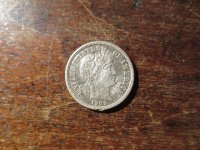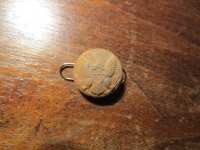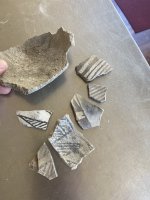Crow
Silver Member
- Jan 28, 2005
- 3,330
- 9,301
- Detector(s) used
- ONES THAT GO BEEP! :-)
- Primary Interest:
- Other
Avast my maties I have pirate yarn for you. Grab your favorite brew sit back and enjoy the yarn as this is what treasure legends are for.
First we have learn the back ground of one of most the intriguing pirates in history. No one is sure if he got away with booty of died in poverty. there was rumors of buried treasure. but lets start with the history of what we know of the man.
Henry Every (23 August 1659 – ??), also known as Henry Avery was a famous English pirate who captured many ships throughout the Atlantic and Indian Ocean in the late 1600's. He is known to have used many aliases, and his crew used to call him 'Long Ben'. Every was one of the most fearsome and notorious pirates of his time, and was one of the only few along with Henry Morgan. that was able to retire with his loot. However, while Morgan did it in full view of the authorities, Every was forced to run and hide from history.
Not much is known about Every's early life. It is known he was born in the Western Country of England and served in the Royal Navy for a year in 1689. From there he went onto various other enterprises before ending up in piracy. For his pirate career, Every was famous for being successful on the first Pirate round and plundering a ship that was personally owned by the Emperor of the entire Mughal Empire.
To be continued....
Crow
First we have learn the back ground of one of most the intriguing pirates in history. No one is sure if he got away with booty of died in poverty. there was rumors of buried treasure. but lets start with the history of what we know of the man.
Henry Every (23 August 1659 – ??), also known as Henry Avery was a famous English pirate who captured many ships throughout the Atlantic and Indian Ocean in the late 1600's. He is known to have used many aliases, and his crew used to call him 'Long Ben'. Every was one of the most fearsome and notorious pirates of his time, and was one of the only few along with Henry Morgan. that was able to retire with his loot. However, while Morgan did it in full view of the authorities, Every was forced to run and hide from history.
Not much is known about Every's early life. It is known he was born in the Western Country of England and served in the Royal Navy for a year in 1689. From there he went onto various other enterprises before ending up in piracy. For his pirate career, Every was famous for being successful on the first Pirate round and plundering a ship that was personally owned by the Emperor of the entire Mughal Empire.
To be continued....
Crow






